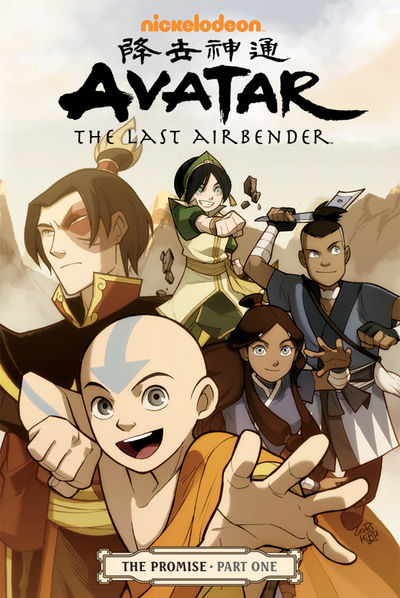
Man, I love that show. I love that show so much I don’t really get people who don’t love that show.
Folks talk about the martial-arts action, the sidesplitting humor, and the three-dimensional characters, but really, “three-dimensional” doesn’t cover it. Aang, Katara, and company aren’t just well written; they’re alive. I swear, more than once, I’ve felt Appa’s breath on my face. (No, I do not do drugs. Yes, I do sit too close to the screen.)
Appa, for those who’ve never seen an episode of Nickelodeon’s Avatar: The Last Airbender, is the giant flying bison that our young protagonists ride from town to town, adventure to adventure. Let me repeat the important parts of that sentence. Giant! Flying! Bison! Seriously, if you don’t love that show, I don’t think we can be friends.
For me personally, though, the appeal of the show goes beyond Appa’s breath.
When I was a kid, my Chinese immigrant mother used to tell me stories at bedtime, the same stories she heard when she was a kid. I listened wide eyed as moon goddesses, talking forest creatures, and corrupt magistrates committed acts of heroic self-sacrifice and unspeakable evil. Sure, her stories were exciting, but they also carried echoes of a culture that I found all around me at home, yet only experienced secondhand.
As I followed the last Airbender on his journey to save the world, I felt the same stirring inside that I used to get from my mother’s stories.
Avatar cocreators Michael Dante DiMartino and Bryan Konietzko and their team drew from Asian cultures and Asian mythology to construct a fully realized fantasy world, complete with a kung-fu-based magic system. When we walk the streets of the Fire Nation, we visit Meiji-era Japan. After pushing through the gates of the Earth King’s palace, we find ourselves in the Forbidden City during the last decades of Qing-dynasty China. When Appa lands near the ruins of the Southern Air Temple, we discover Tibetan artifacts at our feet. When Yue, princess of the Northern Water Tribe, sacrifices herself for the Four Nations, she reenacts the drama of Chang’e, the Chinese moon goddess. These are real-world cultures as seen through the lens of myth, and the results are pure magic.
They’re also no accident. As evidenced by Dark Horse’s The Art of Avatar: The Last Airbender, Mike, Bryan, and their team researched relentlessly. (Full disclosure: I don’t get a penny for plugging the art book. Unfortunately.) They studied Asian art, Asian architecture, Asian clothing, and Asian philosophy. They involved their Korean animation partners in a way that was unprecedented for an American studio.
And that’s one of the reasons why my involvement in the Avatar comics has been such a thrill. As I work through the scripts, I’m playing in a world described not only by the Nickelodeon cartoon but also by my mother’s stories. Together with Mike, Bryan, and the ubertalented Japanese art team Gurihiru, I now have the chance to bring a bit of the show’s magic into the panels of my favorite medium.
Will we succeed? That’s for you to decide. When Avatar: The Last Airbender—The Promise Part 1 comes out in January, pick up a copy and read it up close, just a couple of inches from your nose. Let me know if you feel Appa’s breath on your face.
-Gene Yang